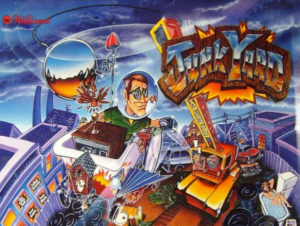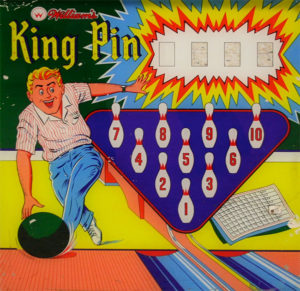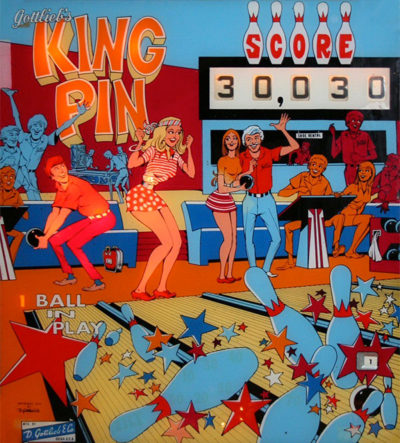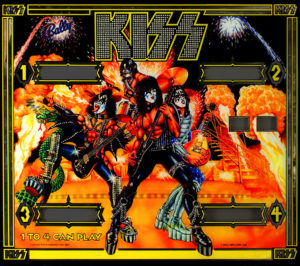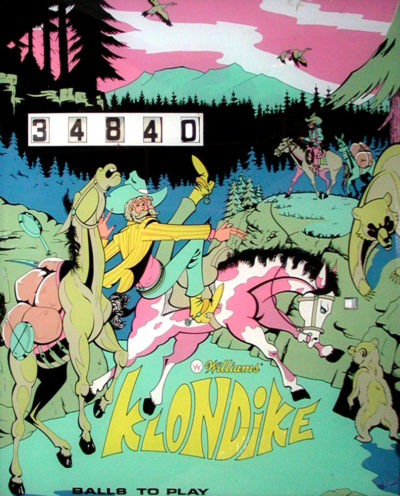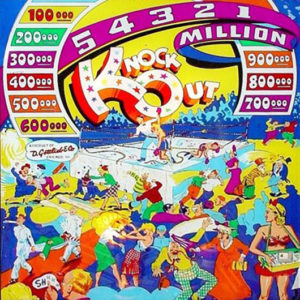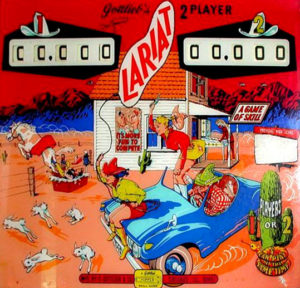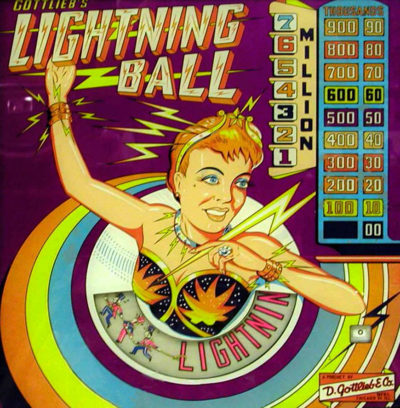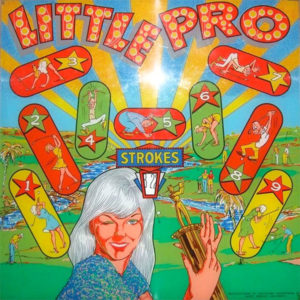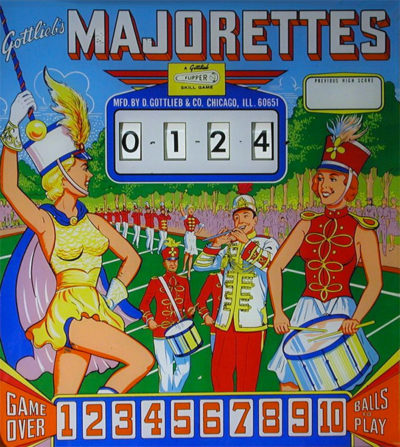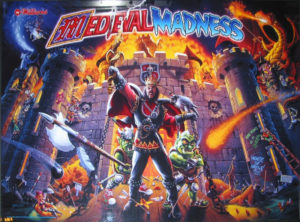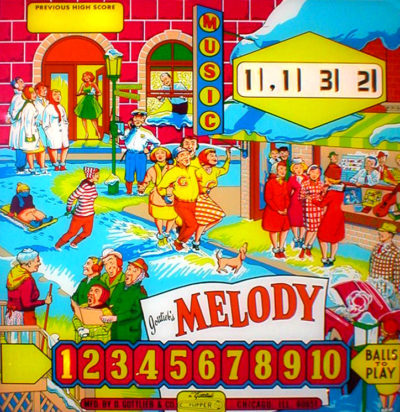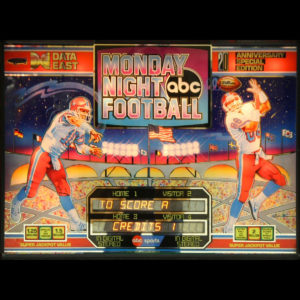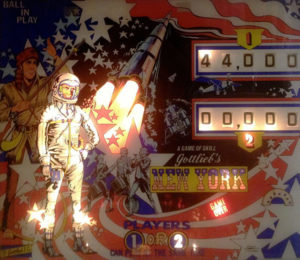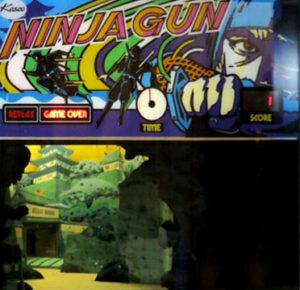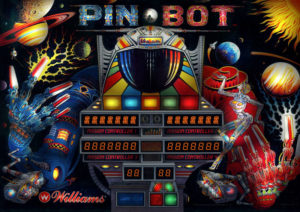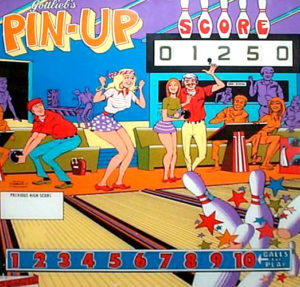-
Playfield Layout There are two standard flippers and standard return lanes in the usual positions. The inlanes can be lit to start Crane Hurry-up. The outlanes have quite large openings, and each outlane can be lit separately for a “Ball Recycle”. Above the left out/inlanes there is a popper which returns the ball to the left inlane. Most of the shots that take balls under the playfield return the ball here. On the playfield beside this device is a bank of three standup targets with blue lights in the playfield in front of them, which, when completed, lights the left outlane Recycle. Above this there are two ramps with entrance side-by-side. The far left ramp leads to a toilet, which counts the spins the ball takes inside it before falling under the playfield. The inner ramp carries the ball around the back of the playfield toward a VW bus in the back right corner; a diverter can cause the ball to be temporarily held here or to return directly on a habitrail to the right inlane. This ramp also has an open side which allows slow shots to fall through to an area not otherwise accessible, which dribbles down into the hole in front of the dog. Lights in front of these ramps indicate various available shots. In the center of the top of the playfield is this game’s main feature. The “Crane” is a pinball hanging from a chain. The chain hangs from a bar (which is decorated to look like a crane) that goes into the back wall of the game. This ball can be raised or lowered, to allow the pinball to pass under it, or block its path. The bar itself can move side-to-side and up-and-down slightly, in addition to the wild motion the ball has. Around this, arranged in a semicircle, are 2 banks of 3 standup targets with an opening for another shot (which goes around a corner and under the playfield) between them. Above these there is a row of 5 larger “car” standup targets, with no gap. The crane ball can be hit into these higher targets. Several lights in front of the crane ball indicate shots available on the crane ball (by hitting it into the car standups) or in the opening behind it. There doesn’t seem to be a name for this opening (in some mode, I forget which, the game calls it the alley, but the playfield calls the DOG scoop the alley), so I will call it the center shot. Below the right side crane standups there is an up-scoop which usually drops the ball onto the bus ramp’s habitrail to the right inlane, but a diverter can send it to the dog instead. The dog is a decoration just in front of the bus; when the ball goes to him, it falls into a hole in the playfield in front of him, and if the ball was supposed to be there, a video mode starts. Lights in front of the scoop spell out D-O-G. Just to the left of it there is a small standup target, the Toaster Gun target. Below and slightly to the right of the scoop entrance, there is a sinkhole called the Sewer that can be entered from almost any direction. Lights in front of it indicate a variety of awards which can be available here, including Extra Ball and Adventures. The adventures themselves are indicated by a separate row of lights across the playfield, below the lights for the ramps, crane, and scoop. Below the Sewer there is a bank of 3 blue standups; these light the right outlane Recycle and are similar to their counterparts on the other side of the playfield. The plunger (which is a combination manual and autoplunger) shoots the ball through a spinner and into a sinkhole, which, like other holes on this game, takes the ball to the left inlane feed. Junk In the middle of the lower section of the playfield, in addition to lights for “shoot again” and autofire, there is a blueprint with 10 different pieces of junk marked with lights. Some of the pieces combine to make various contraptions. The junk consists of: Hair dryer, toaster, cuckoo clock, television, weathervane, fishbowl, propeller, fan, bathtub, and bicycle wheels. The game begins with the toaster already awarded. The combinations are: • Hair dryer + toaster = toaster gun • television + weathervane = radar • bicycle wheels + bathtub + fan = jalopy • fishbowl + jalopy = submerger • propeller + jalopy = flying machine There is an extra ball awarded for collecting a certain amount of junk, which is on a percentage; on the game I play it’s awarded on the third junk item. Collecting all the junk lets you enter your initials as junk champion at the end of the game. The current junk champion’s initials are shown on Spike’s collar when each dog video mode begins. Helpful hints At various times during the game, an angel appears on the left of the DMD or a devil appears on the right, and they make some comment. Whenever you collect junk, one or both of them appears and advises you what to collect next. (If your first junk item is anything other than the hair dryer, both appear, the angel advising you to get the hair dryer and the devil advising you to get a part for the radar.) One of these also announces each time an invention is completed, or when an adventure starts.



